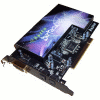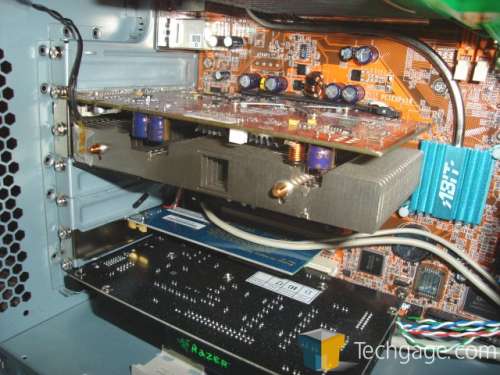- Qualcomm Launches Snapdragon 4 Gen 2 Mobile Platform
- AMD Launches Ryzen PRO 7000 Series Mobile & Desktop Platform
- Intel Launches Sleek Single-Slot Arc Pro A60 Workstation Graphics Card
- NVIDIA Announces Latest Ada Lovelace Additions: GeForce RTX 4060 Ti & RTX 4060
- Maxon Redshift With AMD Radeon GPU Rendering Support Now Available
Razer Barracuda AC-1 Sound Card

With the anticipated release of the Razer Mako loudspeakers, we have a look at Razer’s Barracuda AC-1 audio card, and compare it to two other common audio solutions. The Barracuda AC-1 boasts an impressive feature set, and its audio chipset has an excellent reputation for sound quality. Will it be a fitting partner for the new Mako speakers?
Page 7 – Listening
In any sound card purchase you make, the final judge will be your ears. I’ll confess – the Razer Barracuda AC-1 is a product (‘reviewable’) I’ve been sitting on for quite a while – several weeks, at least. During that time, I’ve had an opportunity to hit it with everything from a Ben Folds DVD-Audio to full-on hardcore rock, and even some gaming. No matter what I threw at the Barracuda AC-1, it performed admirably in every case.

Ben Folds Songs for Silverman DVD-Audio
This album exemplifies Ben Folds’ lush-yet-percussive piano style, merging it with rhythm elements and warm vocals. The Barracuda AC-1 remained free of hash throughout the loudest crescendos, and delivered the most subtle detail of the cello on “Gracieâ€. In addition, bass was tight and well-defined, but without the boomy ringing effect that some mistakenly identify as “slamâ€. This is an engaging recording, and the Barracuda AC-1 doesn’t disappoint.

Switchfoot Nothing Is Sound DVD-Audio
Listening to the powerful, fast-moving second track “Starsâ€, and the slower track “Happy Is A Yuppie Wordâ€, I noticed a clearer and better-defined edge on the lead singer’s voice, though overall the presentation didn’t strike me as particularly transparent. Perhaps that’s because rock music in general is heavily compressed anyway. Ben Folds’ Songs for Silverman was more transparent and open than this recording, even in DVD-Audio format.

Just Cause
To test this card’s abilities in a gaming scenario, I threw in Just Cause for a few minutes of shootin-em-up. I decided this would be a good time to test the card’s Dolby Headphone DSP, to see if it lent new depth to the game’s positional audio. The Barracuda AC-1 handled the game well, locating the origin of gunshots and explosions accurately, while delivering plenty of low-end power to add authority and definitude to the sound of exploding vehicles.
These are only three examples of the various ways I’ve had a chance to put the Barracuda AC-1’s performance to the test. I also had the opportunity to test the AC-1 with the matching HP-1 headphones, and found that the combination provided a convincing surround sound experience though I wasn’t particularly impressed with the HP-1’s cupped midrange. What did impress me about the AC-1/HP-1 duo was the big, bad bass that the HP-1s were able to achieve. Even my fairly inefficient Sony in-ears could be driven to uncomfortable levels, thanks to this card’s massive +/-5V output capability. I was thoroughly pleased with the overall sonic experience of the Razer Barracuda AC-1 audio card.
|
|
Support our efforts! With ad revenue at an all-time low for written websites, we're relying more than ever on reader support to help us continue putting so much effort into this type of content. You can support us by becoming a Patron, or by using our Amazon shopping affiliate links listed through our articles. Thanks for your support!





